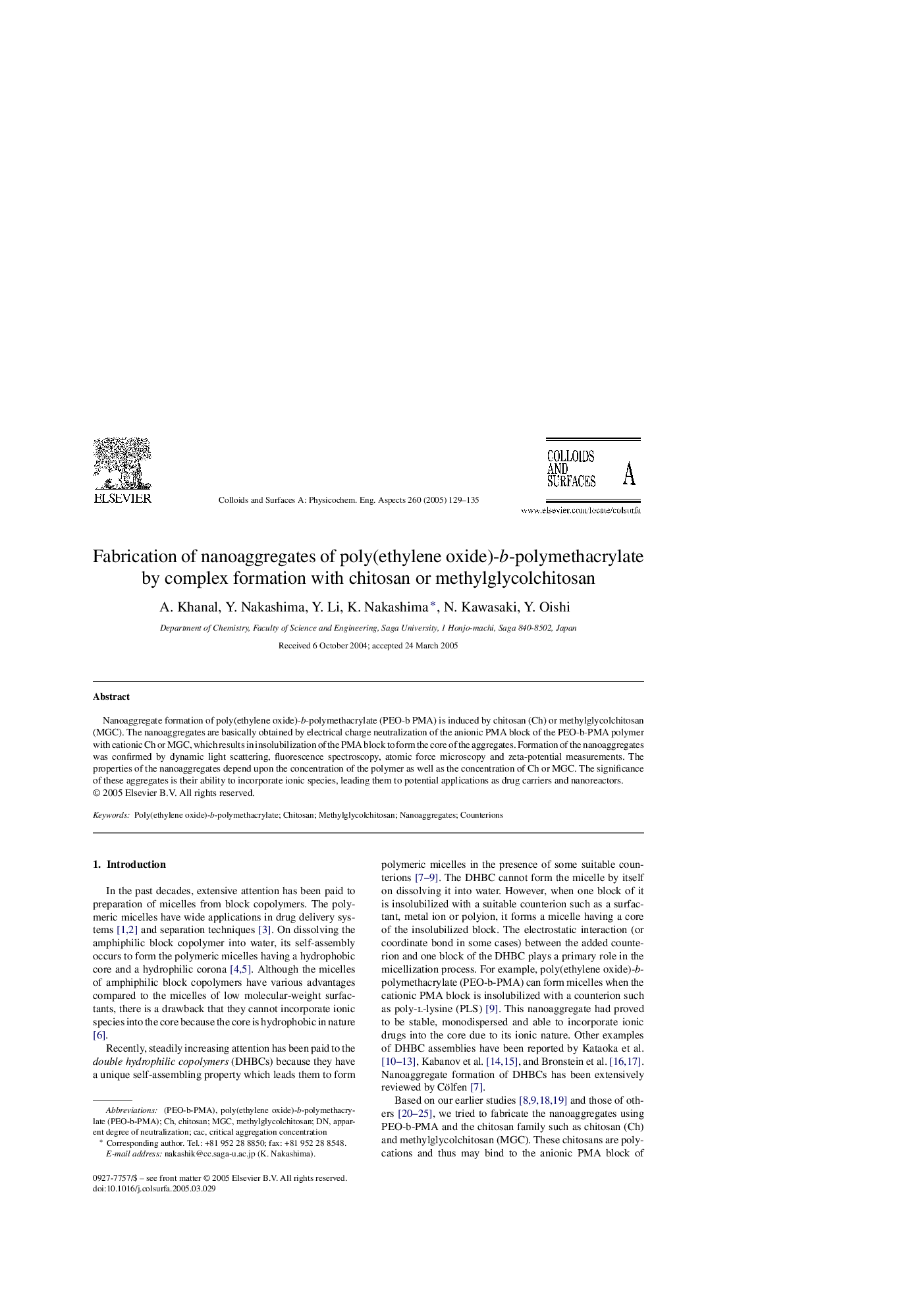| Article ID | Journal | Published Year | Pages | File Type |
|---|---|---|---|---|
| 9675877 | Colloids and Surfaces A: Physicochemical and Engineering Aspects | 2005 | 7 Pages |
Abstract
Nanoaggregate formation of poly(ethylene oxide)-b-polymethacrylate (PEO-b PMA) is induced by chitosan (Ch) or methylglycolchitosan (MGC). The nanoaggregates are basically obtained by electrical charge neutralization of the anionic PMA block of the PEO-b-PMA polymer with cationic Ch or MGC, which results in insolubilization of the PMA block to form the core of the aggregates. Formation of the nanoaggregates was confirmed by dynamic light scattering, fluorescence spectroscopy, atomic force microscopy and zeta-potential measurements. The properties of the nanoaggregates depend upon the concentration of the polymer as well as the concentration of Ch or MGC. The significance of these aggregates is their ability to incorporate ionic species, leading them to potential applications as drug carriers and nanoreactors.
Related Topics
Physical Sciences and Engineering
Chemical Engineering
Colloid and Surface Chemistry
Authors
A. Khanal, Y. Nakashima, Y. Li, K. Nakashima, N. Kawasaki, Y. Oishi,
